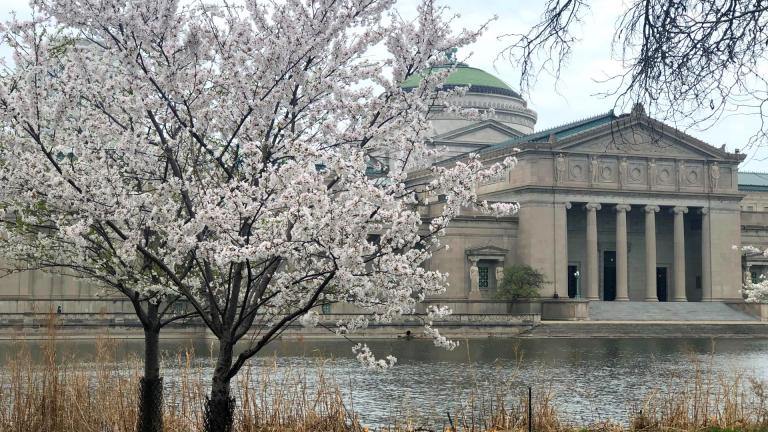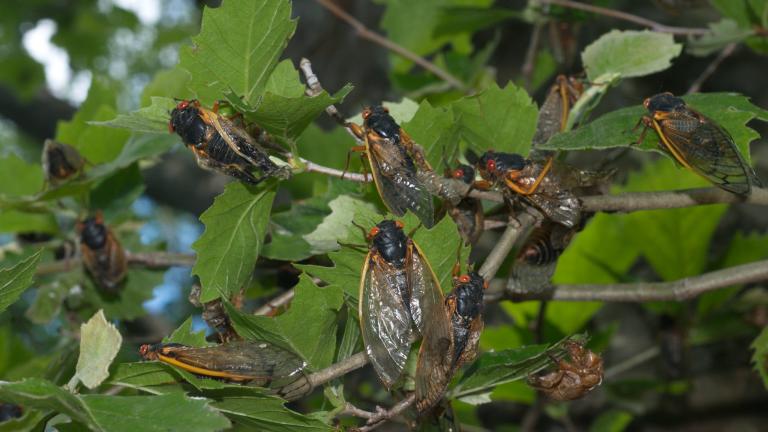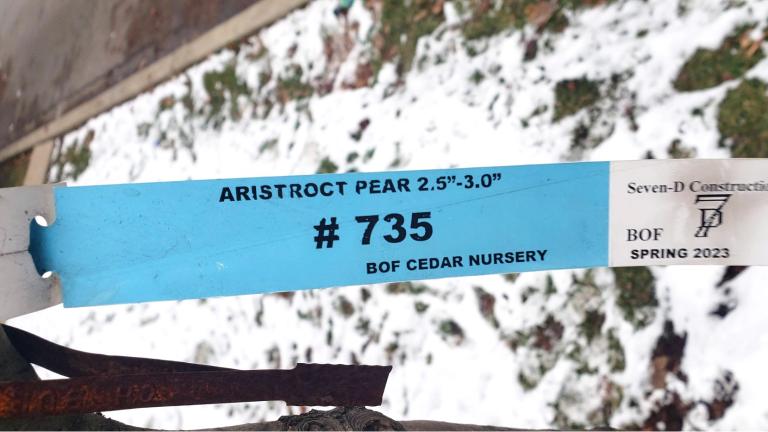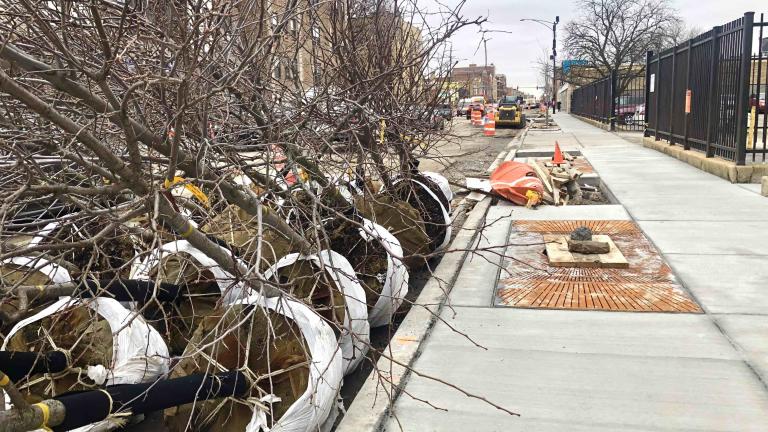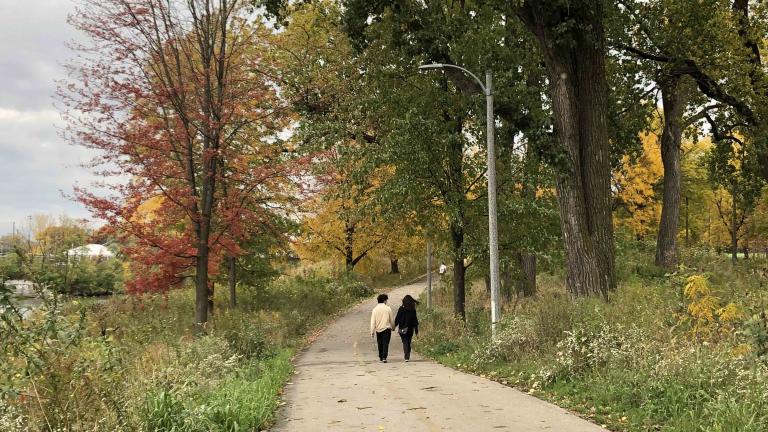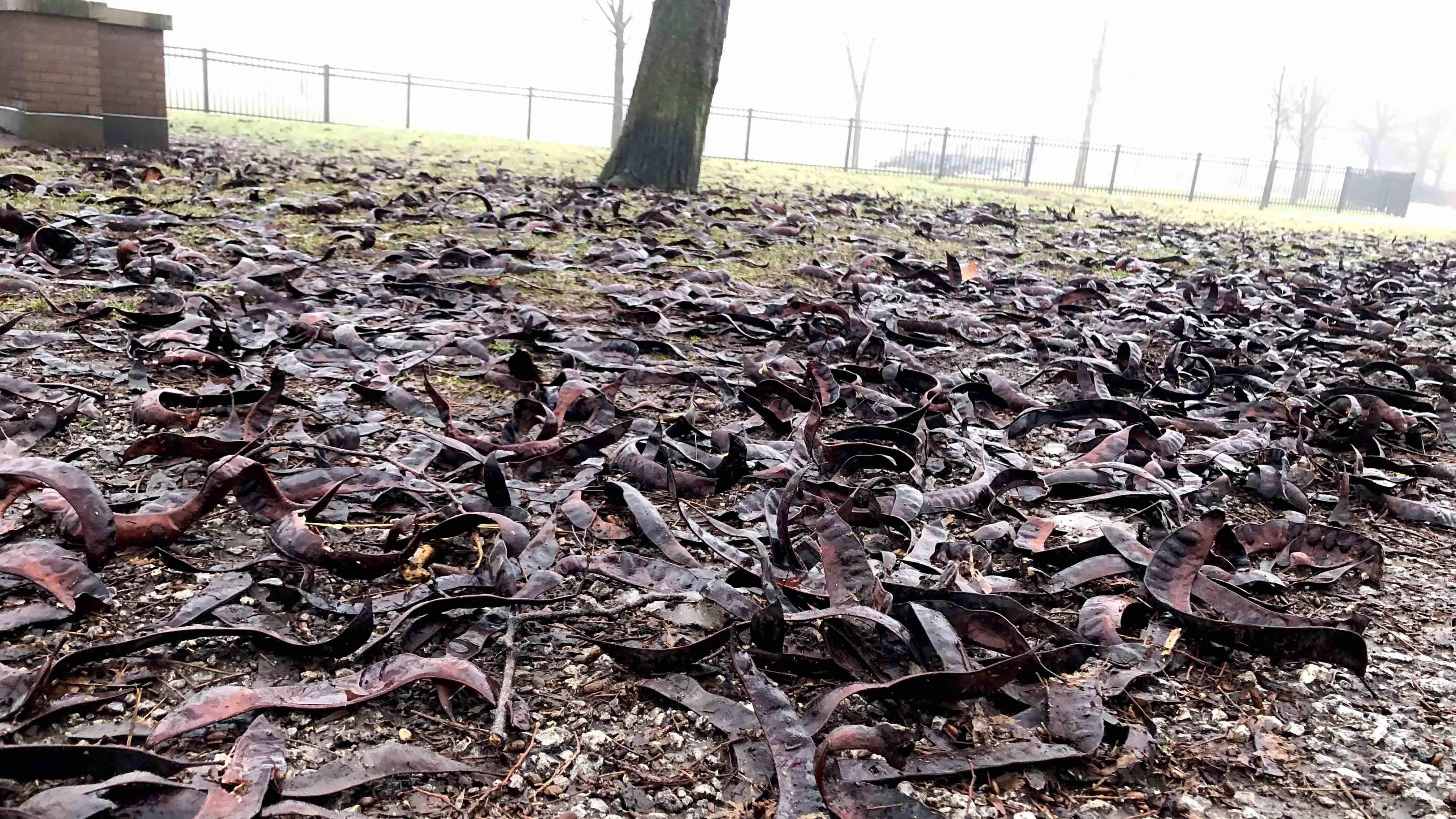 Honey locust seed pods blanket the ground in Albany Park, late January 2024. (Patty Wetli / WTTW News)
Honey locust seed pods blanket the ground in Albany Park, late January 2024. (Patty Wetli / WTTW News)
Add the honey locust to the list of trees that have dropped an uncommon amount of seed within the last year. It was just biding its time.
In a winter that hasn’t seen much in the way of snow, honey locust pods are picking up the slack in terms of blanketing lawns, parkways and sidewalks, and piling inches deep along curbs.
Like cottonwoods and red oaks before them in 2023, the honey locusts are responding to an environmental trigger, said Jalene LaMontagne, a research biologist and professor at DePaul University, who studies what are known as “mast seeding” events, or the synchronous release of an inordinate amount of seed.
Every so often — maybe every three years, maybe every six or seven — a species of tree will “do this big bang of reproduction,” LaMontagne said.
Because honey locusts flower later than many other species, and their seeds don’t mature until mid-October, the distinctive pods — up to 12 inches long — drop later than other trees, she said, but added that late January/early February seemed delayed.
It’s possible, she theorized, that the trees hung onto their pods during December’s record warmth, and then January’s bitter cold snap gave the trees the signal they needed to let loose.
Unlike seeds dispersed by wind, honey locust seed pods don’t fall far from the tree and rely on wildlife, particularly deer, to spread. Each pod contains anywhere from 10 to 20 seeds, and the seed coats are so hard that they need to pass through a creature’s gut in order to dissolve. When the seeds come out the other end, it’s a crapshoot whether they’ll land in a spot conducive to germination and growth.
From a strategic standpoint, it makes sense for the honey locust seeds to fall at a time of year when other food sources are scarce, in the hopes that hungry deer and squirrels will chow on the pods, LaMontagne said. (Though squirrels may be set with acorns, thanks to that masting event in fall.)
“Trees are playing the odds,” she said. “They have different ways of getting to the same outcome” — generating new trees — “if they all did it the same way, there would be so much competition.”
Contact Patty Wetli: @pattywetli | (773) 509-5623 | [email protected]

